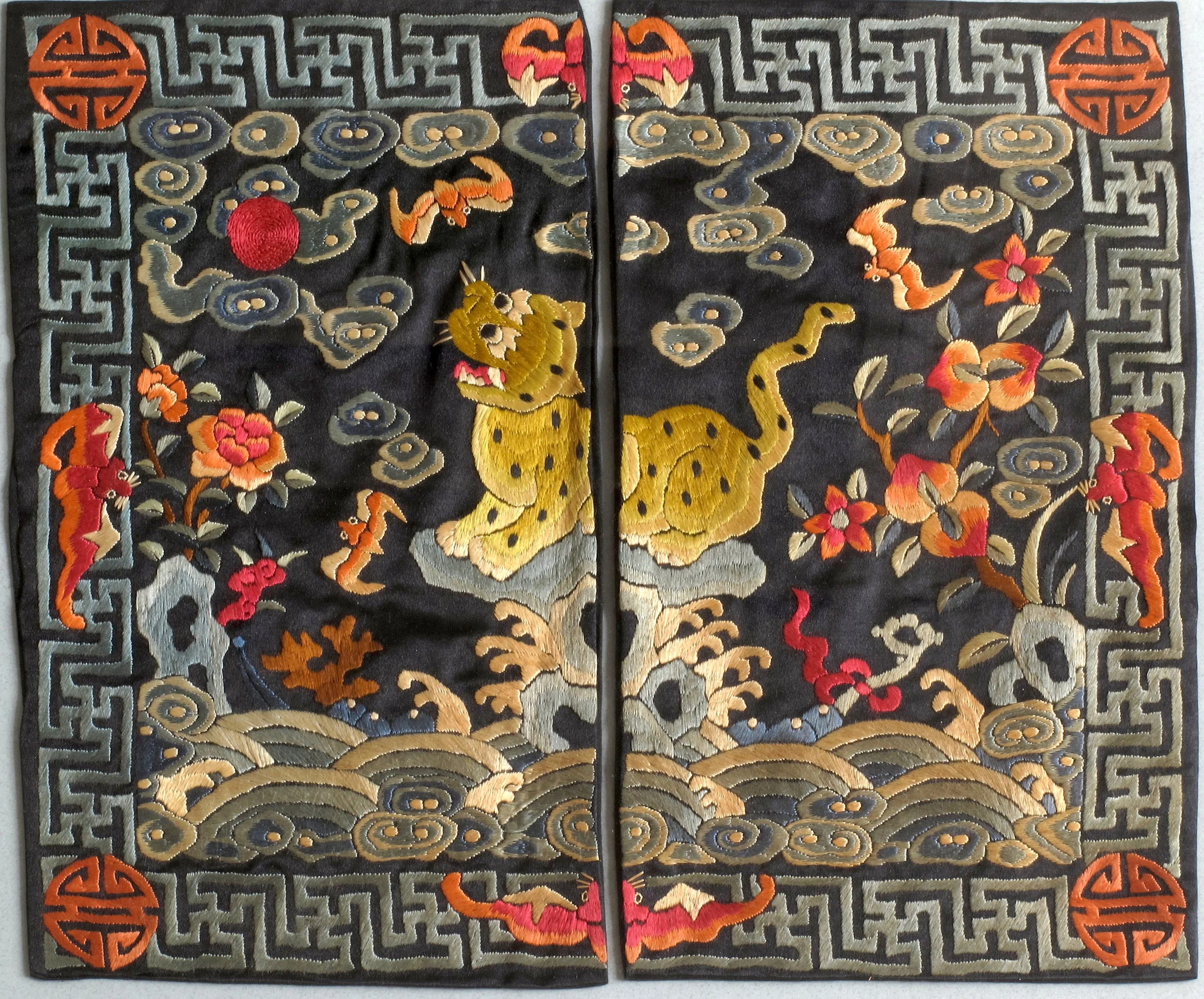Rank Badge Beasts: 文經武緯
This unusual hand-coloured Chinese woodblock print from Yangliuqing, a famous craft centre outside of Tianjin city in northern China, came up at auction in 2021.
The title, wenjing wuwei (文經武緯) literally means “civil warp, military woof” – the idea that civil and military departments should work closely together to govern the country. In reality, civil officials, who were only appointed after years of study and passing a series of gruelling literary exams, had nothing but contempt for the military, who were badly trained, very poorly paid and widely thought of as little better than unsophisticated, licensed bandits.
Civil and military streams were divided into nine ranks each, and this print shows children riding the various birds (civil) and animals (military) which represented the different ranks. Officials wore square badges (補子) front and back on their robes, embroidered with the appropriate bird or animal.
Each of the children holds a banner giving the rank number and name of their mount. Starting with the civil ranks, the highest level is Crane, followed by Golden Pheasant, Peacock, Wild Goose, Silver Pheasant, Egret, Mandarin Duck, Quail, and finally Paradise Flycatcher. As for the military, ranks 1 & 2 are both lion, then tiger, leopard, bear, rhino (looking like a goat in this print), panther (more like a weasel), and sea horse (a full-sized marine horse, not the fish). The animals and birds used for each rank varied over time, and this particular arrangement dates to the period 1652–1662, very early on in the Qing dynasty.
The central child rides a mythical qilin, holding a banner reading 公侯駙馬伯 – a list of the nobles, not of direct imperial stock, who were entitled to wear a qilin badge. After 1662, the qilin replaced one of the lions as representing top-ranking military officials.
In this print, the birds and animals are all easily told apart from each other (if not always realistically drawn). But often this wasn’t the case with the rank badges themselves, where there seem to have been attempts to make the lower-ranking creatures very hard to tell apart from those in the upper ranks – presumably to make the wearer seem more important than they really were.
The signature down the left hand side (戴廉增) reads Dai Lianzeng. The Dai family had been printmakers for nine generations, and Dai Lianzeng founded his own print shop at Yangliuqing in the mid-eighteenth century. He’s credited with pioneering the detailed overpainting technique which Yangliuqing studios became famous for.
Having said this, woodblock prints are difficult to date, as the same design could be produced for decades, or even longer, if there was enough demand for it. As noted above, this one probably originated in the 1650s, though Dai Lianzeng didn’t even establish his studio for another century – perhaps he based it on an earlier design from the family studios. This print is unlikely to be from the eighteenth century though, and the seemingly ancient, yellowed paper was in fact cheaply made and aged very quickly (I have a Chinese calendar for 1989 which looks a century older).
All that can be said with certainty is that this design would have lost its meaning after the rank system was abolished by the Republican government in 1912, so – unless for nostalgic reasons – this print is unlikely to have been made much later than this. I’d guess late nineteenth century.
For more about rank badges: Ladder to the Clouds, by Jackson and Hugus (1999)




